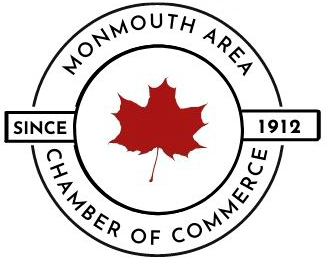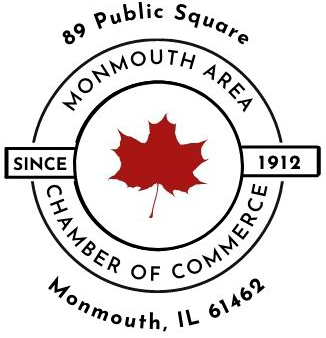Rotary Clubs have a proud history of contributing to civic projects, such as building parks or planting trees, but the Monmouth Rotary Club holds the distinction of contributing to a project unlike any other — the construction of a college dormitory.
To understand the motivation for the dormitory project, which occurred in the summer and fall of 1946, we must consider the unusual historical circumstances facing the country that year. The Servicemen’s Readjustment Act — also known as the G.I. Bill of Rights — was signed into law in 1944, but it wasn’t until the surrender of Japan in 1945 that World War II veterans began streaming back to the United States in overwhelming numbers.
A key provision of the G.I. Bill was up to $500 per year of free college tuition, in addition to a living stipend of $65-$90 per month. As a result, small colleges such as Monmouth (where tuition was $130 per semester) were suddenly inundated with veterans seeking to resume their studies or begin an undergraduate program.
To get a sense of the magnitude of the problem, Monmouth’s enrollment in the fall of 1943 had been 281 women and 62 men. When classes started in the fall of 1946, 413 men had enrolled, of which 300 were returning veterans. That would be good problem for a college to have in today’s world, but in 1946 Monmouth had no dormitories for men, and they were therefore forced to either seek lodging in the community or live in a fraternity house.
College officials applied to the Federal Public Housing Authority for assistance in helping to house veterans, and received authorization to build temporary housing units for 32 single men across from the gymnasium on North 7th Street, as well as eight apartments for married couples on North 9th Street, but it was clear that project would take time to materialize.
The Rotary Club, which included Monmouth College trustees and employees among its ranks, was well aware of the crisis, including the fact that there was a shortage of private homes in the community interested in housing young men. They decided in the spring of 1946 that it would be both patriotic and beneficial to the greater Monmouth community to assist with the construction of a men’s dormitory on campus. Thus was born Rotary Hall.
The club sought commitments from its members and managed to assemble a pledge of $7,675 toward the estimated dormitory cost of $30,644. To put those amounts in modern-day perspective, the club pledged the equivalent of $93,000 toward a $371,000 project. The college’s board of trustees gratefully accepted and voted to name the facility Rotary Hall.
College architect Arthur O. Angilly, who was at the time supervising construction of the new Winbigler Hall for women on North 9th Street, offered his services in putting plans on paper for the one-story brick building to house 36 men that would include showers, bedrooms, study rooms and a parlor. In three to five years, it was hoped that the modest facility would be incorporated into a larger men’s residence hall, housing 90 students.
Business manager David McMichael wanted to build Rotary Hall adjacent to the heating plant in the center of campus, but Angilly argued successfully for a more spacious location between College Place and North 7th Street. Commenting on the situation, the student newspaper quipped that Angilly should receive a “special award of honor for talking Mr. McMichael out of building Rotary Hall next to the heating plant. Mr. Angilly is believed to be the only person that has ever talked Monmouth’s business manager and vice president out of anything.”
When classes began on Sept. 19, 1946, campus housing was in crisis mode. Although the brand new Alice Winbigler Hall for women was still unfinished, 68 women moved in anyway, despite the fact that the rooms had no doors and the only available furniture was beds. On top of that, the concrete footings for Rotary Hall were only that week being poured.

The 34 men who would be Rotary Hall’s first residents were forced to occupy improvised quarters in the gymnasium for the first eight weeks of the semester. During that time, they were issued paintbrushes and given the privilege of helping to finish the interior of their new dormitory.
Because plastering would delay the completion of Rotary Hall for two to three more weeks, the walls were built from a fireproof gypsum block product known as Pyrobar that could later be plastered over.
On Nov. 22, furniture was moved from the gymnasium to the new building, as were the men, who would sleep two to four per room. Although the heating system and bathrooms were completed, the living room was unfurnished and still being used as a workroom. The building also lacked shades for the bathroom, but because those windows looked out on the Phi Kap fraternity house, that wasn’t considered much of an issue.

Six years later, Rotary Hall would be incorporated into the new Fulton Hall, becoming the first and partially second floor of the building’s west wing.

by Jeff Rankin
Editor and historian for Monmouth College. Avid researcher of western Illinois history for 40 years. FB and Twitter. jrankin@monmouthcollege.edu



